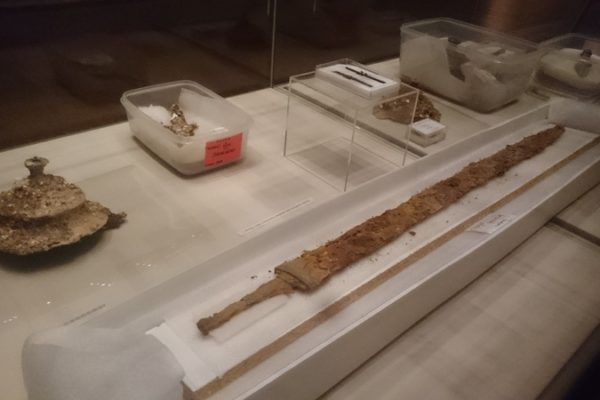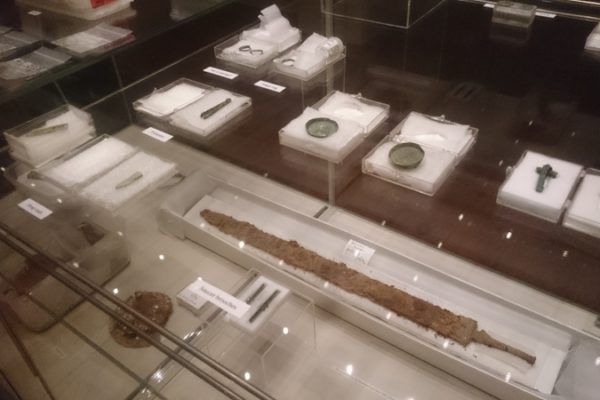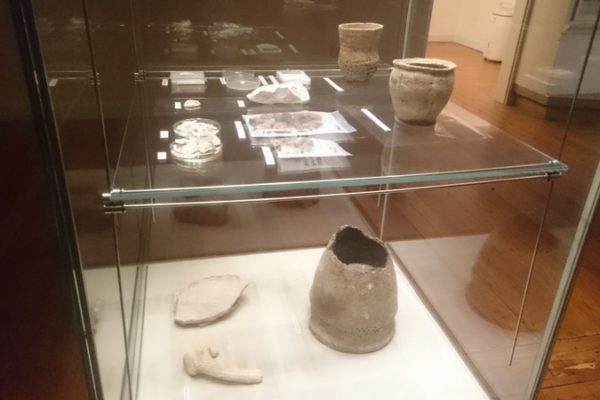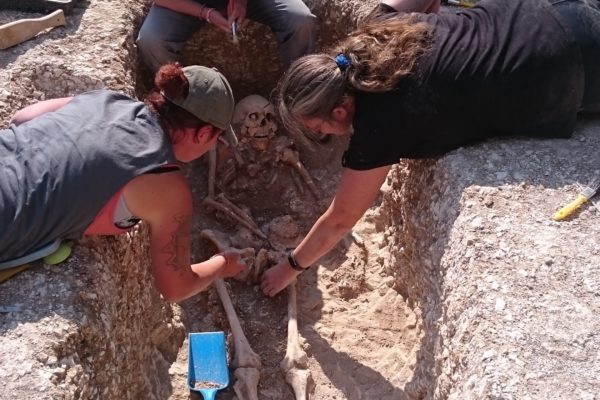Following the launch of the Barrow Clump report, a selection of finds from the excavation are on display for just two days – Friday and Saturday 10 and 11 January 2020. For these two days, entry to the Museum is half-price for Service Personnel and their families – children (as always) are free.
The project was a collaboration including the Ministry of Defence, the Defence Infrastructure Organisation, Wessex Archaeology and Historic England. Excavations were led by Richard Osgood (MoD Archaeologist) and Phil Andrews (Wessex Archaeology).
The Museum is the long-term repository for the archaeological archive and already has some finds from the site on display in the Saxon Gallery.
Copies of the report – “A Prehistoric Burial Mound and Anglo-Saxon Cemetery at Barrow Clump” are available from the Museum shop.
Wessex Archaeology said on Twitter:
- The launch represents the culmination of years of archaeology, research, and above all collaboration. Excavations were undertaken as part of Operation Nightingale; a military initiative which supports the recovery of injured service personnel through archaeology.
- The Barrow Clump site is located on Salisbury Plain; an area which many of the OperationNightingale soldiers were already familiar with as a result of their service careers.
- Excavations took place over several summers, allowing Operation Nightingale personnel to live in the field; a brilliant way to become immersed in the landscape and develop further connection with the site.
- Participants in Operation Nightingale worked alongside Wessex Archaeology staff and volunteers to develop a range of archaeological skills, and were involved first-hand in many significant discoveries on the site.
- An Anglo-Saxon cemetery was discovered at Barrow Clump containing more than 70 graves of men, women and children. Operation Nightingale personnel were key to the excavation and recording of these remains.
- Some of the graves poignantly contained items associated with warfare. A 6th-century sword was analysed through careful X-ray technology; it was revealed to be made of wrought iron and steel and created by a process known as pattern welding.
- Summing up perfectly, here are the words of Rowan Kendrick, who worked on the site as part of #OperationNightingale, and having left the Army, is now a professional archaeologist: “…carefully excavating Anglo Saxon skeletons whilst dealing with civilians and the seemingly ever-present press and tv people who took great interest in this ground-breaking project was one of the most daunting, exciting and fascinating things I have ever done.”
Find out more about the site from the Wessex Archaeology Barrow Clump website..





